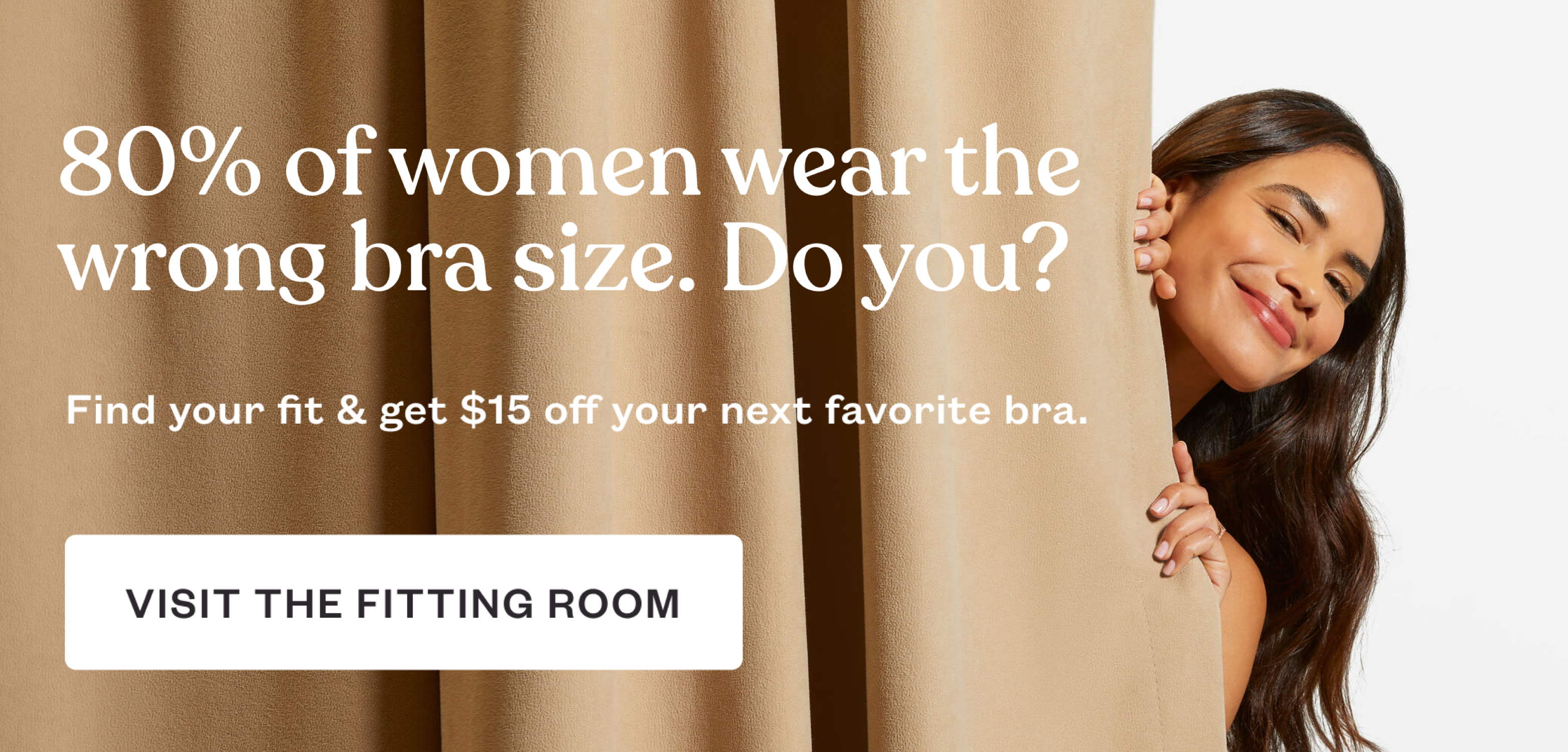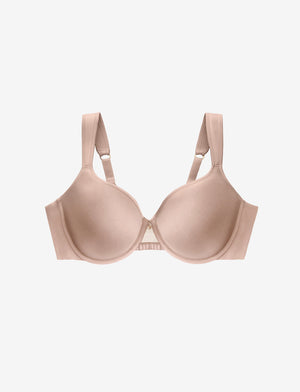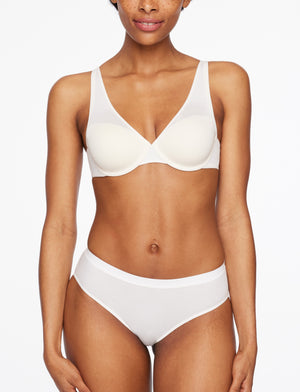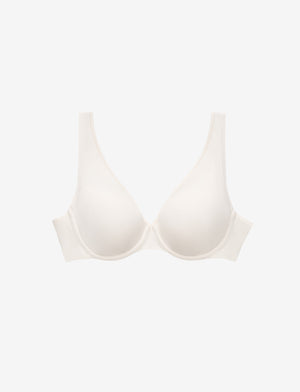Returns & exchanges free for 60 days for all U.S. orders. Please try on the bra to ensure a good fit, making sure to leave the original tags attached....
Read more7 Common Bra Fit Issues & Solutions
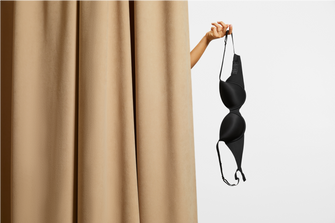
At ThirdLove, our goal is to help women everywhere find their perfect bra fit — but we know it’s not always that simple. On top of having to consider your own unique breast shape, there are many common fit issues that can determine which bras are best for you and will make your boobs look and feel great.
Ever experienced bra fit issues? Read on as we identify some of the most common ones (and their solutions) to help you find your perfect size the next time you go bra shopping. If you would like some more help, take our Fitting Room Quiz to find your perfect size and fit in just a few minutes!
Identifying Common Bra Fit Issues
An ill-fitted bra is like wearing a tad too small a shoe. You can feel that something just doesn't sit right; however, you need to be able to put your finger on the problem to solve it. Our mission, therefore, is to guide you through these bra fit issues, helping you get the bra that supports you and makes you feel comfortable and confident. Whether it's slipping straps, bra band ridding up, underwire discomfort, and so much more, we have you covered so you can bid farewell to bra-related woes.

1. Straps Slipping Off Shoulders

Are you always pulling up your straps when you’re wearing your bra? To fix slipping straps, try tightening your bra straps if you haven’t already. Straps can stretch out over time, so we suggest doing this every other month or so.
If tightening your straps doesn’t do the trick, take a look at the style of bra you’re wearing. Did you know that certain styles (Full Coverage and T-Shirt style bras) typically have narrow-set straps that help keep them on your shoulders throughout the day? Other styles, like Balconette and Plunge bras, have wider-set straps and can slip more easily depending on your body type. Take a look at our Bra Style Guide to identify the style you should be wearing.
You should also consider the age of your bra. If you’ve been wearing this bra for a long time, the straps may have deteriorated, stretched out, and lost elasticity over time. It’s time to replace your bra with a new one that will support you comfortably.
2. Bra Straps Digging In

Lastly, if you’re a D cup or bigger, we suggest buying a style of bra with narrower straps, like our 24/7® Perfect Coverage Bra, so that the straps are centered on your shoulders and the weight of your breasts is evenly distributed.
3. Bra Band Riding Up or Too Tight
One of the most common fit issues that women deal with is their bra band riding up on the back or feeling too tight. This can be identified by looking in the mirror and checking that the back band is parallel to the ground. This issue is typically a sign that your bra band is too large and that you need to go down a band size. It occurs when the breast weight at the front is not adequately supported, thereby pulling the band upwards at the back.
Equally, a bra band that’s too tight can indicate poor bra fit. When the band is excessively tight, it can cause discomfort and back pain and leave red marks on the skin. It can also restrict movement and make it difficult to breathe. Adjust the band to a looser clasp for a more comfortable fit. If you still experience these problems, opt for a slightly larger band size. Remember to confirm your cup size after you size up your band, as cup sizes are relative to it.
4. Gaping Bra Cups

If your bra gaps at the top of the cup, try tightening your bra straps. If that doesn’t work, go down a cup size — your cup may be a little too big. If you don’t think you’re an entire cup size smaller, consider one of our half-cup sizes (our Fitting Room quiz can help you identify if half-sizes may be right for you).
If your cups fit well but there’s still room at the top for gaping, consider a plunge or a push-up style to push your breasts upwards. These cups tend to be cut a little smaller to reduce gaping in the first place.
5. Cup Spillage
Ever had your breasts spill out of the sides of a cup? That’s a surefire sign that your cups are too small. Overflowing bra occurs when your breasts don’t have enough room within the cups, causing them to spill out over the top or sides. This often leads to an uneven quadboob look under clothing as the bra struggles to contain your breast tissue. This is probably the easiest bra fit issue to fix — just size up in the cup.
Or, if your band doesn’t feel tight enough, you might need to size up in the cup and down in the band. A snug band will pull the wire in your bra back, and allow your breasts to sit in the cup where they belong.
Here’s how to deal with cup overflow:
If your breasts are spilling out of the bra cup, you’re wearing the wrong size bra. Similar to side overflow, cup overflow is easy to fix: trade-in for a bigger cup size and give your breasts some much-needed breathing room! If you’re a 34B, trade up a half-size to 34B ½ or a whole cup size to 34C if you need it. You (and your breasts) will breathe a sigh of relief.
6. Underwire Digging In

There are many issues that underwire can cause. Sometimes, we speak to women whose wires are sitting on their breast tissue. This is a sign of your band being too big — you need to invest in a smaller band size to tighten the fit. (Remember: if you size down in band size, you need to go up in cup size, so that your breasts still have room to breathe. For more information on how this works, check out our Size Chart.) Some women experience their underwire digging into their ribcage or breast tissue - this is a bit trickier to solve for as it could be due to the cup or band size. In this case, we recommend you get resized either at one of our retail stores or online using our Fitting Room Quiz.
7. Uncomfortable Fabric or Chafing
We get it; there's nothing worse than a bra that feels like it's made of sandpaper! This can happen when your bra material is too rough, tight, or synthetic. The culprit could also be seams, hooks, or bra tags rubbing against your skin, causing irritation.
The solution to uncomfortable fabric or chafing is exploring bras made of high-quality and breathable materials that suit your skin type and preference. If you have sensitive skin, opt for softer fabrics like our organic cotton cloud, which will treat your skin like royalty. Additionally, consider opting for bras with smooth seams and tagless designs to minimize irritation.
Importance of a Proper Bra Fit
You may wonder why having a proper bra fit is so important. After all, it's just a piece of clothing you wear under your clothes, right? Wrong! Your bra is more than just a garment; it's a support system for your breasts that can affect your health, comfort, and confidence.
A properly fitting bra will improve your posture and eliminate shoulder pain and back problems. You will also be able to enhance your appearance, prevent sagging and stretching of your breast tissues, and increase your comfort and happiness. Moreover, you reduce the risk of breast cancer by improving blood circulation and lymphatic drainage.
How to Measure Your Bra Size
You must first know your size to embark on your quest for the perfect bra. Most women wear the wrong bra size because they do not know how to measure themselves properly or rely on outdated methods or inaccurate charts. Our Fitting Room Quiz is our trusty companion on this journey, guiding you to your perfect size with just a few clicks. The fitting room quiz has a trusted reputation for helping thousands of women get accurate bra sizes and say goodbye to poorly fitting bras. Explore our bra size chart for more information as well on the different sizes that we offer. Remember, your bra size might change over time, so it is advisable to measure yourself regularly.
Shopping for the Perfect Bra
Now armed with the newfound knowledge of common fit issues and your measurements, you are ready to get your perfect bra. Consider your breast shape to get the bra style that flatters you. You can check out our breast shape dictionary to identify your breast shape and find the best style for you. We also understand that you have your style; we, therefore, present you with a wide range of the best bras to choose from. At ThirdLove, we're dedicated to making your bra shopping journey as pleasant as possible.
Tags:
